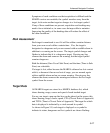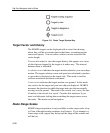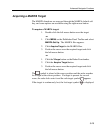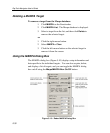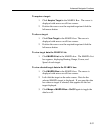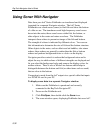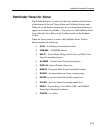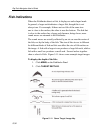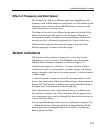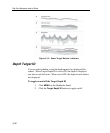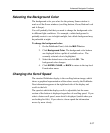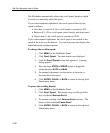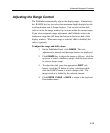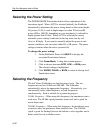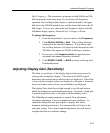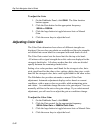
Advanced Navigator Functions
5-35
Effect of Frequency and Boat Speed
The return from a fish has a different appearance depending on the
frequency used: 50kHz produces a wide beam, so a fish spotted by this
frequency gives a broad arch; the 200 kHz beam is narrower so the
same fish produces a narrower arch.
The shape of the arch is also affected by the speed of the boat. If the
boat is moving slowly, the arches tend to be longer; if the boat is
moving more quickly, the arches are short and peaked. If the boat is
moving very fast, a fish may be indicated by a single vertical line.
In Bottom lock mode the fish arches may appear distorted as the
bottom topography is removed from the image.
Bottom Indications
The bottom usually produces a strong echo, so it is easy for the
Fishfinder to see a lot of detail. The Fishfinder can indicate many
different kinds of bottom conditions, as shown in Figure 5-12.
A hard bottom appears as a thin line. An uneven bottom which is
covered with rocks or coral produces a complex display; the bottom
image is irregular, with long tails pointing upward. A wreck produces
a similar image.
A softer bottom or a bottom covered with seaweed produces a wide
line, as the sound waves reflect from different layers of the bottom. In
Figure 5-12, the Fishfinder is getting a good echo from the bottom, so
the upper layer of the bottom is shown as dark gray.
Notice that the lower layer of the bottom is shown as a lighter gray,
this indicates a weaker echo. This could mean that the upper layer is
soft; some sound waves may get through this layer and be reflected as
a more solid layer below.
It is also possible that the sound waves are making two complete trips
— hitting the bottom, bouncing off the boat, then reflecting off the
bottom again; this can happen if the water is shallow, the bottom is
hard, or gain is set high.



